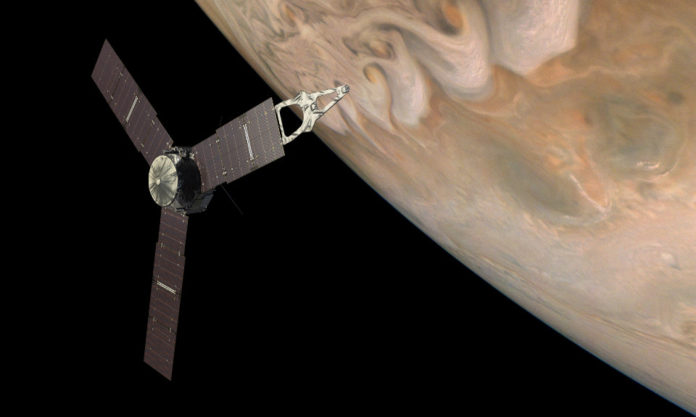Fully one third of the people reading this article are going to face misfortune in their lives this Year of the Yin Metal Ox. Disturbing, yes, but we may also be on the cusp of discovering more as to the influence of the Chinese Zodiac on our year-to-year lives, and it’s thanks to Jupiter.
Next time you ponder your Chinese Zodical sign, consider that you have the planet Jupiter to thank. As the brightest thing in the night sky bar our moon, it was understandable that in ancient times the Chinese regarded Jupiter as a star. And a big, powerful one at that.
The gas giant that is the undisputed king of our solar system has an orbital period of 11.862 years, close enough to 12 years to explain why it is the basis for the signs of the Chinese Zodiac.
Powerful forces then, just as today, were given names. Hence Jupiter came to be known as Sui (岁). Yin and Yang then did their thing and soon Jupiter had her opposing number; what was initially an imaginary star became a deity, one with absolute command over worldly affairs. Enter Tai Sui (太岁), also known as the Grand Duke.
As a result, Jupiter’s orbit around the sun was thought to have a direct influence over our Earth, while Tai was said to bring down misfortune upon people with opposing Zodiacal signs.
This year, people needing to take steps to appease Tai are those in direct affliction and those at the other end of the Zodiac in conflict. In addition, the remaining two animals located at 90 degree intervals from the Duke (“side clash”) also need mind their p’s and q’s during the Zodiacal year.
Hence this year, those born in the years of the Ox, Dragon, Ram and Dog face the most potential turmoil. Respects must be paid to Tai.
Furniture can be turned to face southeast, homage can be made at temples which feature the Grand Duke, a talisman of the Grand Duke may be carried as an amulet and his image displayed in the northeastern part of a home.
Yet, sceptics abound. Those favouring science over superstition will attribute the Tai phenomena to the movement of Jupiter, which has an impact on the magnetic field around us. Less understood is the extent of that impact.
Recent advances in cosmology tell us that Jupiter played an important role in the formation of the planets, particularly the Inner Solar System’s four rocky planets; Mercury, Venus, Earth and Mars.
As a kind of gatekeeper, Jupiter has long protected the inner planets, permitting their near circular orbits that enable stable climates over billions of years allowing for the evolution of life.
While we have learned much about Jupiter, many questions remain, particularly as to the gas giant’s magnetic field. And that’s where NASA’s Juno mission comes in.
Entering the planet’s orbit in 2016, the Juno space probe seeks to answer questions such as what exactly drives Jupiter’s magentic field.
We do know that field is enormous, stretching for five million kilometres out into space. Were it visible to the human eye, it would be the size of our moon in the night sky.
The field is also so powerful that close-up inspections of the planet are only possible by flying Juno in for very brief encounters, before quickly returning to safety afar, for fear of its systems being fried by the intense radiation.
And so it is logical to conclude that influence may extend as far as the Earth. Happily, a lot more scientific discovery is on the way, as NASA announced in January of this year that the Juno mission be extended to 2025.
During this time, maybe, just maybe, Juno will bring to light evidence to substantiate Jupiter’s influence over Earthly matters; the 12 animals of the Chinese Zodiac might well be more grounded in scientific fact than many would have ever believed possible.
[A NASA educational resource for the Juno mission is available at missionjuno.swri.edu]









